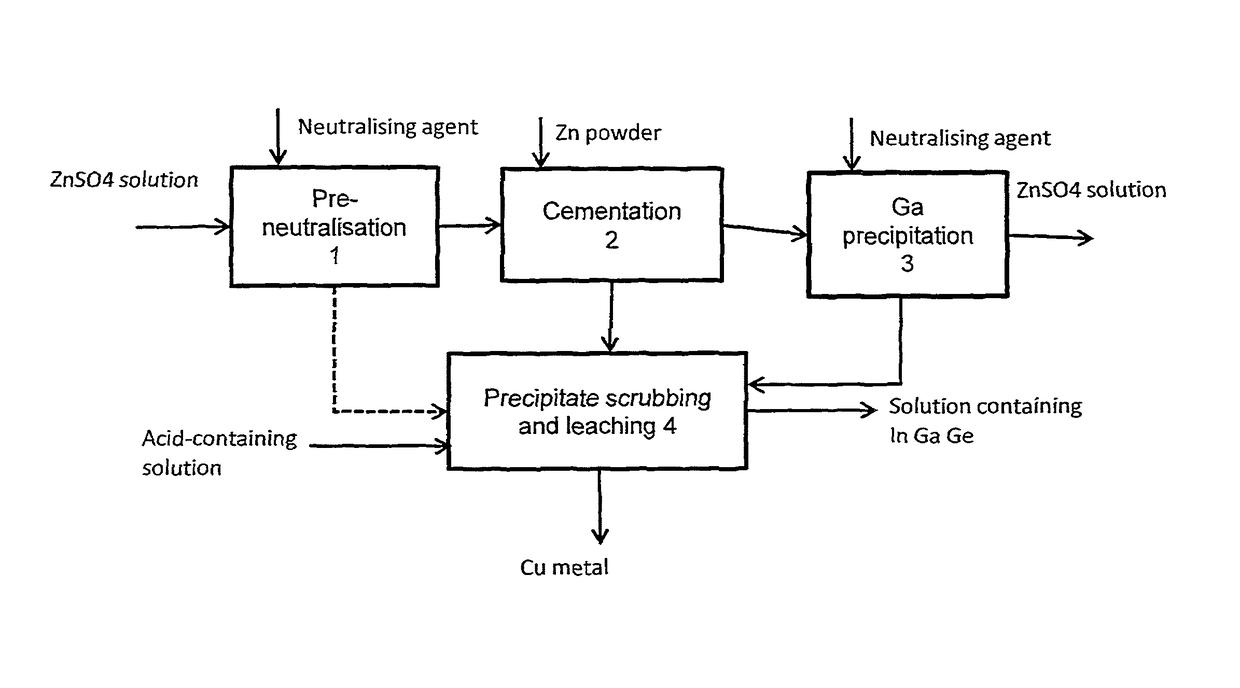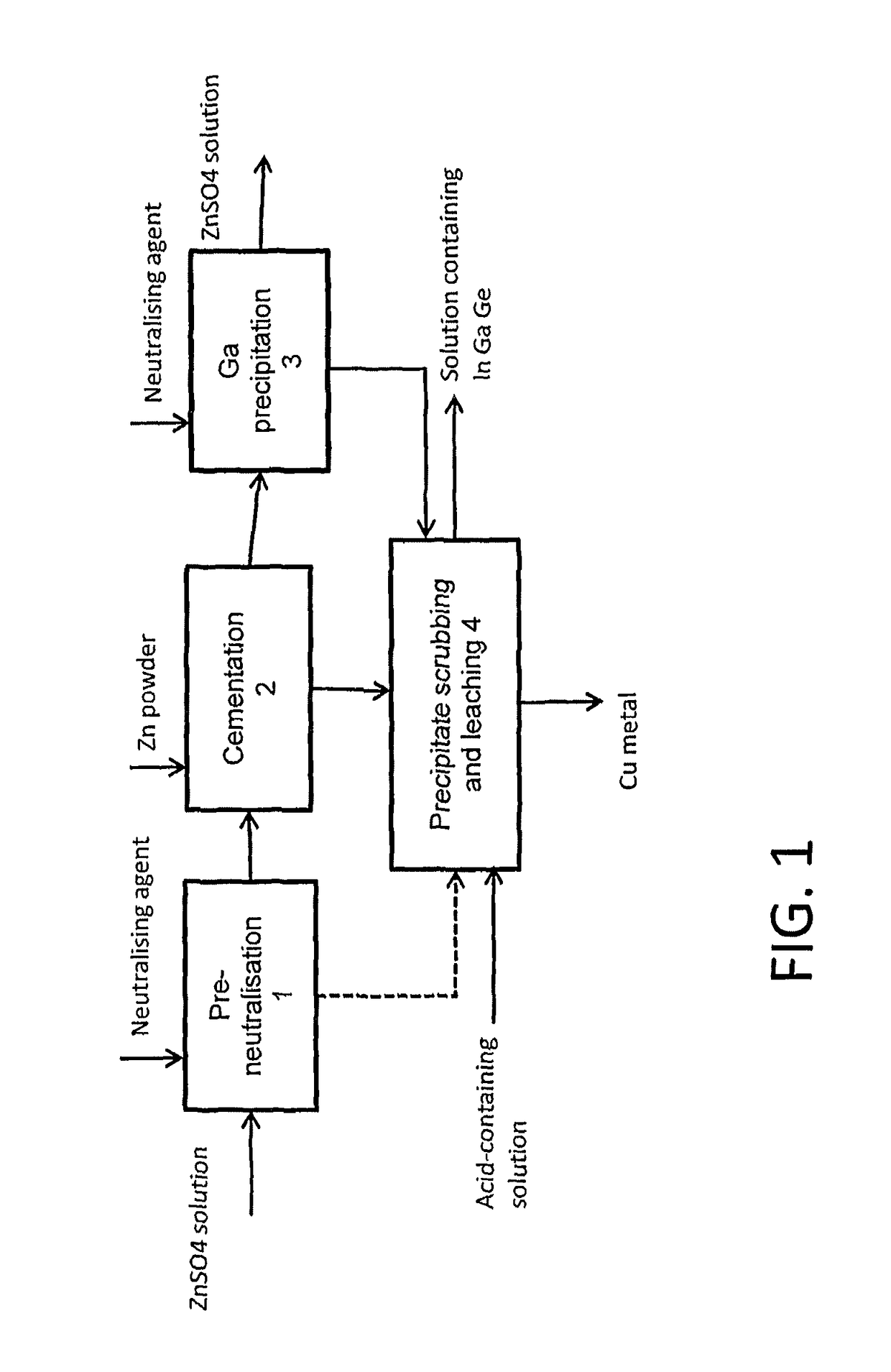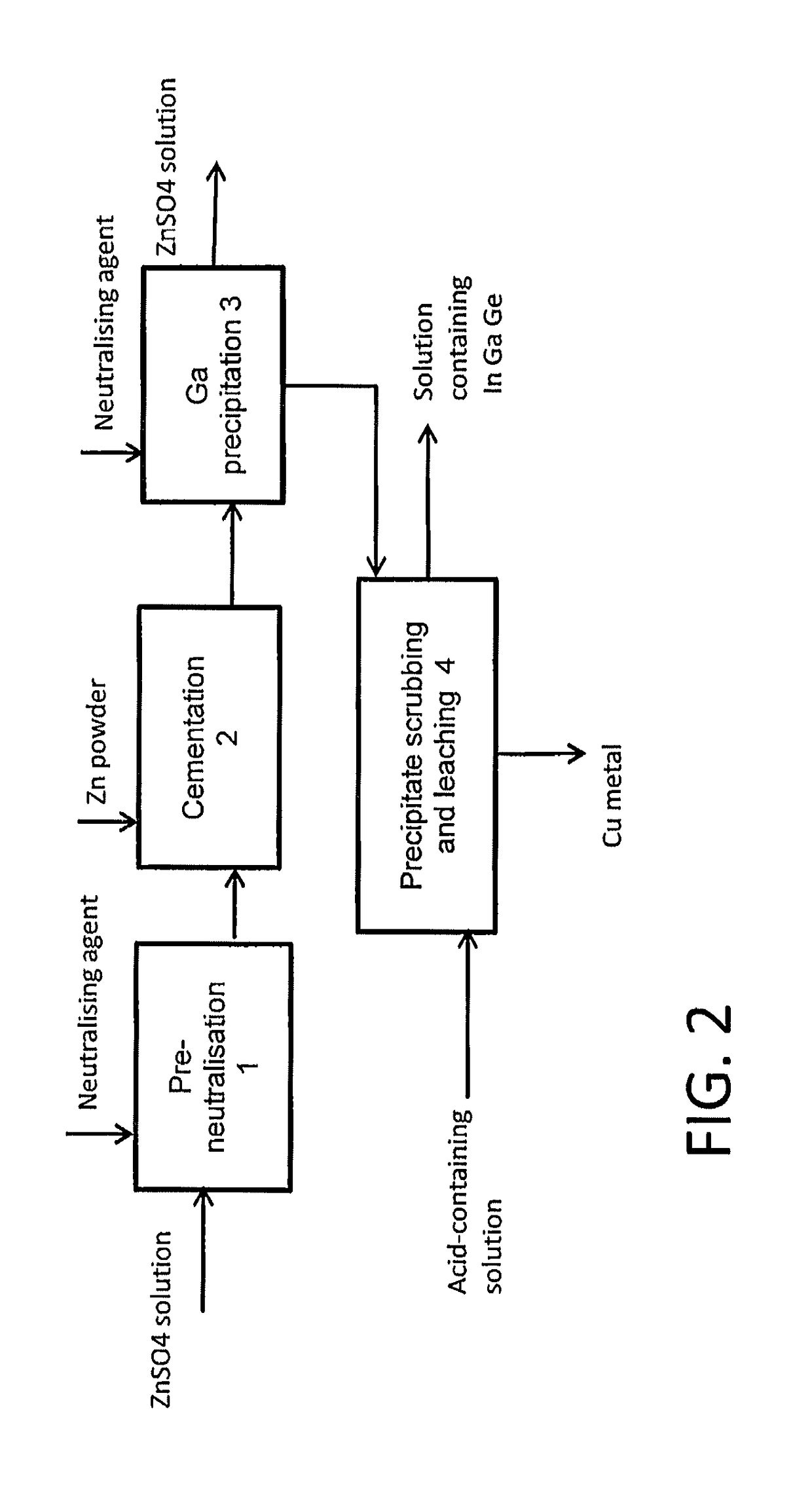Method for treating a solution containing zinc sulphate
a technology of zinc sulphate and solution, applied in the field of method for treating a solution containing zinc sulphate, can solve the problem of reducing the current efficiency of electrolysis
- Summary
- Abstract
- Description
- Claims
- Application Information
AI Technical Summary
Benefits of technology
Problems solved by technology
Method used
Image
Examples
example 1
[0032]The example illustrates a pre-neutralisation stage, whereby a zinc sulphate solution with a pH of 2 was neutralised in stages with zinc oxide to a pH value of 3.
[0033]A zinc sulphate solution was placed in a 2 L glass reactor, which was equipped with a back-flow condenser, a mixer, thermometer, and pH and redox sensors. The solution was heated on a hot plate to a temperature of 65° C. As the test proceeded the pH value was raised gradually with fine zinc oxide. The system was allowed to stabilise at each pH stage (45 min) before taking a sample. After sampling more zinc oxide was added, until the next pH value was reached. During sampling the pH and redox values were measured. The test results are presented in Table 1.
[0034]
TABLE 1Solution concentrations in the pre-neutralisation stagepHRedoxCuFeGaGeInZn—mVmg / lmg / lmg / lmg / lmg / lmg / l2.1 367178014200130 108 1051241002.5 353157012400117 97.392.21078002.8 30016401250079.696.787.31147003.026116301290048.592.280.3117000
[0035]The table...
example 2
[0036]In this test the cementation of a zinc sulphate solution was performed at a pH value of around 3.
[0037]The test arrangement was similar to that in pre-neutralisation example 1. A zinc sulphate solution was prepared for the test. Its initial concentration is shown in Table 2 at a moment before the zinc powder was added. In the test, zinc powder was added gradually 1.5 g at a time, after which the slurry was allowed to stabilise for 30 min before taking a sample, after which the next dose of zinc powder was added. During sampling the pH and redox values were measured. The cementation test results are presented in Tables 2 and 3.
[0038]
TABLE 2Cementation of zinc solution at pH 3, solution analysesRedoxpHZn additionCuFeGaGeInZnmV—gmg / lmg / lmg / lmg / lmg / lg / l0917910010310483.391.83663.01.5580949080.689.96893.23453.03.0271847066.776.456.183.72953.04.59885405475.743.687.04103.06.00.380907476.120.685.8−2503.07.5776070.445.61.281.6−4803.09.00.5782067.430.182.1−5003.010.5766062.814.779.5−540...
example 3
[0041]The test arrangement was similar to that in pre-neutralisation example 1 and example 2. A zinc sulphate solution was prepared for the test, with the initial concentration that is shown in Table 4. The pH of the solution was initially 2.5, and the solution was neutralised in the way accordant with example 1. After this, the solution was subjected to cementation in the manner according to example 2, at a pH value of about 3.5. The results are shown in Table 4. The solution analyses are given in the upper section of the table and the precipitate analysis in the lower section of the table. The table shows that in particular indium and germanium are recovered well when the solution is first pre-neutralised and then cemented with zinc powder. About 20% of the gallium remained in solution, but this can be precipitated out of solution by neutralising the solution further.
[0042]
TABLE 4Neutralisation of zinc solution from a pH value of 2.5 to a value of 3.5 and cementation at a pH value...
PUM
| Property | Measurement | Unit |
|---|---|---|
| pH | aaaaa | aaaaa |
| temperature | aaaaa | aaaaa |
| concentration | aaaaa | aaaaa |
Abstract
Description
Claims
Application Information
 Login to View More
Login to View More - R&D
- Intellectual Property
- Life Sciences
- Materials
- Tech Scout
- Unparalleled Data Quality
- Higher Quality Content
- 60% Fewer Hallucinations
Browse by: Latest US Patents, China's latest patents, Technical Efficacy Thesaurus, Application Domain, Technology Topic, Popular Technical Reports.
© 2025 PatSnap. All rights reserved.Legal|Privacy policy|Modern Slavery Act Transparency Statement|Sitemap|About US| Contact US: help@patsnap.com



